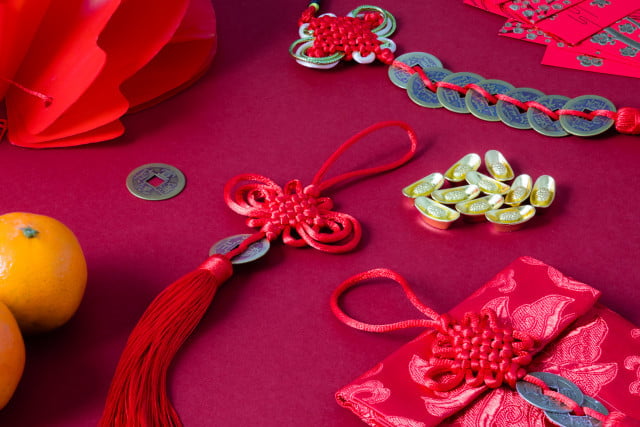Feng Shui is an ancient Chinese practice that focuses on the balance and flow of energy in our environment, with the belief that it directly impacts our well-being. The colors we surround ourselves with play a crucial role in this practice, as they have the power to influence our physical health, emotional well-being, and overall vitality. By understanding the principles of Feng Shui color for health, we can create harmonious and vibrant living spaces that support optimal wellness.
Maintaining a harmonious and balanced environment is essential for promoting health and well-being. According to Feng Shui principles, when the energy flow in our homes or workplaces is stagnant or disrupted, it can negatively impact various aspects of our lives, including our physical health. By incorporating the right colors into our surroundings, we can enhance the positive energy (or chi) and create an atmosphere that promotes healing and vitality.
The concept of Feng Shui revolves around the idea that each color represents one of the five elements (Wood, Fire, Earth, Metal, Water) which are fundamental energies found in nature. By understanding these elements and their corresponding colors, we can use them strategically in different areas of our home to influence the energy flow positively.
So whether you’re looking to infuse your bedroom with calmness and serenity or boost vitality in your kitchen or promote relaxation in your living room, choosing the appropriate Feng Shui colors can make a significant difference.
In this article, we will delve deeper into the world of Feng Shui color for health. We will explore the power of color therapy in traditional healing practices and understand how specific colors can support physical health as well as emotional well-being.
Additionally, we will provide practical tips on selecting color schemes for different rooms to create healing and restful spaces while maintaining balance and harmony in daily life. Harnessing the power of Feng Shui colors can be transformative towards achieving optimal health and creating a vibrant living environment.
The Power of Color in Feng Shui
Color plays a significant role in Feng Shui and can have a profound impact on our mental, emotional, and physical well-being. In this section, we will explore the significance of color in Feng Shui and how it is used in various traditional healing practices.
In Feng Shui, each color is associated with specific energies and elements that can influence the energy flow in our spaces. Different colors have different effects on our mood, emotions, and overall vitality. For example, warm colors like red and orange are believed to stimulate energy and passion, while cool colors like blue and green promote calmness and tranquility.
Color therapy is a popular healing practice that has been used for centuries in cultures around the world. It harnesses the power of color to balance and restore energy within the body. This therapy involves exposing oneself to specific colors or using colored lights to address various health concerns. For example, yellow is often used to improve digestion and boost mental clarity, while pink is believed to promote feelings of love and compassion.
| Color | Associated Meanings | Health Benefits |
|---|---|---|
| Red | Vitality, Passion, Action | Improves circulation, boosts energy levels |
| Blue | Calmness, Serenity | Promotes relaxation, reduces stress |
| Green | Growth, Healing | Supports immune function, promotes balance |
It is essential to consider the colors in our environment and how they may be influencing our well-being. By incorporating the right colors into our living spaces, we can create a harmonious and balanced atmosphere that supports our health. Whether through color therapy or the careful selection of colors in our home decor, Feng Shui teaches us to use color as a powerful tool for enhancing our overall well-being.
Understanding the Five Elements in Feng Shui
In Feng Shui, the concept of the five elements is fundamental to creating a harmonious and balanced environment. These elements – Wood, Fire, Earth, Metal, and Water – are believed to represent different qualities and energies that can influence the flow of energy in our spaces and impact our health. Understanding the association between these elements and their corresponding colors can help us make informed decisions when it comes to choosing Feng Shui colors for our home.
Wood Element: The Wood element is associated with growth, vitality, and new beginnings. It is represented by shades of green and brown. Green symbolizes renewal, harmony, and healing energy, making it an excellent choice for promoting physical well-being. Brown hues mimic the earth’s nurturing qualities and provide a sense of stability and grounding.
Fire Element: The Fire element represents passion, transformation, and action. In Feng Shui, it is linked to shades of red, orange, purple, pink, and strong yellow. Red is considered an auspicious color that signifies good luck and stimulates energy flow. Orange evokes warmth and enthusiasm while pink promotes love and harmony. Purple is associated with spiritual growth while strong yellow represents confidence.
Earth Element: The Earth element embodies stability, nourishment, and balance. Colors associated with this element include light yellow tones as well as neutral earthy tones like beige or sandy hues. These colors create a sense of grounding in a space while invoking feelings of contentment and tranquility.
Metal Element: The Metal element represents precision, clarity, and efficiency. Colors associated with this element include white as well as metallic shades like gold or silver. White brings clarity while reflecting light to create a fresh atmosphere. Metallic colors add sophistication to a space while enhancing its energetic flow.
Water Element: The Water element symbolizes ease, adaptability, and abundance. It is represented by shades of blue or black in Feng Shui practices. Blue signifies calmness, relaxation, and serenity. It promotes mental clarity and can help soothe the nervous system. Black adds depth and mystery to a space while encouraging introspection and self-reflection.
By understanding the associations between the five elements and their corresponding colors, we can consciously choose appropriate Feng Shui colors in different areas of our home to support a specific type of energy flow for optimal health and well-being. Incorporating these colors can help balance the energy in our spaces and create a harmonious environment that nurtures both our physical and emotional health.
Choosing the Right Feng Shui Colors for Different Areas of the Home
When it comes to Feng Shui, selecting the appropriate colors for each area of your home is crucial in creating a harmonious and balanced environment. Different rooms serve different purposes, and therefore, require different energies. By understanding the principles of Feng Shui color selection, you can enhance the overall energy flow and promote optimal health within your living space.
In bedrooms, where relaxation and rejuvenation are key, it is recommended to use calming colors that promote tranquility and restful sleep. Soft blues and greens are excellent choices as they evoke a sense of serenity and promote a peaceful atmosphere. Additionally, incorporating earthy tones such as beige or light browns can help establish a grounding energy in the bedroom.
In living rooms, where socializing and entertainment take place, it is important to create an inviting and vibrant atmosphere. Warm colors such as reds or yellows can stimulate energy and encourage lively conversation. You may also consider incorporating elements of the Wood element with green accents to bring in vitality and growth.
Kitchens are often considered the heart of the home, representing nourishment and abundance. To promote both physical health and well-being in this space, opt for colors that stimulate digestion such as shades of yellow or orange. These colors are believed to increase appetite while maintaining a warm and welcoming environment.
Bathrooms should evoke cleanliness, purity, and relaxation. Soft whites or pastel shades create a soothing atmosphere that promotes harmony in this area. You may also choose to incorporate touches of blue or gray to symbolize calmness and clarity.
By selecting the right colors for each area of your home based on their function and desired energy, you can harness the power of Feng Shui to create spaces that support your overall health and well-being. Remember that these recommendations are just guidelines, so feel free to experiment with different color combinations until you find what resonates best with you and your home.
Promoting Physical Health with Feng Shui Colors
The choice of colors in our living spaces can have a significant impact on our physical health. In the practice of Feng Shui, certain colors are believed to promote vitality, relaxation, and immune function. Understanding the role of colors in Feng Shui can help us create an environment that supports our physical well-being.
One color that is commonly associated with physical health in Feng Shui is green. Green is the color of nature and represents growth, harmony, and renewal. It is believed to have a calming effect on the body and mind, reducing stress and promoting relaxation.
Green is also associated with the Wood element in Feng Shui, which is connected to growth, development, and vitality. Incorporating shades of green into your living space, such as through plants or green decor accents, can help create a sense of balance and support overall physical health.
Another color that can contribute to physical health in Feng Shui is blue. Blue represents calmness, tranquility, and serenity. It has a soothing effect on the body and is often associated with water elements in Feng Shui. Water symbolizes healing energy and purification. Incorporating blue in your space through wall colors, bedding, or decor items can promote restful sleep and improve respiratory function.
Yellow is another color that can support physical health in Feng Shui. Yellow represents sunshine, warmth, and positivity. It is associated with the Earth element in Feng Shui, which signifies stability and grounding energy. Yellow promotes healthy digestion, boosts energy levels, and enhances mental clarity. Introducing yellow accents into kitchen spaces or using it as a wall color in areas where you spend time engaging in mental activities can be beneficial for your overall physical well-being.
| Feng Shui Color | Physical Health Benefits |
|---|---|
| Green | Promotes relaxation, reduces stress, and supports vitality. |
| Blue | Soothes the body and mind, promotes restful sleep, and improves respiratory function. |
| Yellow | Enhances digestion, boosts energy levels, and improves mental clarity. |
Incorporating these colors into your living space can help create a vibrant and health-promoting environment. However, it is important to remember that individual preferences and personal associations with colors should also be taken into consideration. Experimenting with different color combinations while keeping in mind the principles of Feng Shui can lead to a harmonious and revitalizing space that supports your physical well-being.
Enhancing Emotional Well-being with Feng Shui Colors
In the practice of Feng Shui, colors play a vital role in influencing our emotional well-being. Each color has its unique energetic vibration that can impact our mood, emotions, and overall mental state. By incorporating specific colors into our living spaces, we can create a harmonious environment that supports emotional balance and well-being.
Warm colors such as red, orange, and yellow are known to stimulate energy and passion. These hues can evoke feelings of excitement, happiness, and motivation. Red is particularly associated with vitality and strength while orange is believed to promote enthusiasm and creativity. Yellow brings warmth and positivity to a space and can uplift the spirits.
On the other hand, cool colors like blue, green, and purple have a calming effect on our emotions. Blue is often associated with tranquility and relaxation. It is known to reduce stress levels and promote a sense of calmness in the environment. Green represents growth, harmony, and balance.
It has a soothing effect on the mind and helps create feelings of peace and renewal. Purple is associated with spirituality and introspection. It encourages a sense of serenity and deepens our connection with ourselves.
White is also an important color in Feng Shui as it symbolizes purity, clarity, and new beginnings. It helps create an atmosphere of freshness and promotes mental clarity. Using white in your living space can help bring about a sense of spaciousness and simplicity.
When considering the use of color in your home or workspace for emotional well-being, it’s important to strike a balance by incorporating both warm and cool shades appropriately. Too much stimulation from warm colors could lead to restlessness or irritability while excessive cool tones may result in feeling detached or withdrawn.
To enhance emotional well-being through color choices in Feng Shui, consider your personal preferences alongside the function of each space within your home or workplace. For areas where you want to feel energized and focused, consider using warmer colors such as red or yellow.
In spaces meant for relaxation and unwinding, cool hues like blue or green can help create a tranquil atmosphere. By consciously selecting colors that resonate with your emotions and intentions, you can create an environment that supports your emotional well-being and promotes overall harmony within yourself and your surroundings.
Creating a Healing and Restful Space with Feng Shui Color Schemes
A healing and restful space is essential for promoting overall well-being and optimal health. One way to achieve this is by incorporating Feng Shui color schemes into your living environment. The colors we surround ourselves with can have a powerful impact on our energy levels, emotions, and overall state of mind. Here are some tips on creating a serene and healing environment using Feng Shui color principles.
1. Choose calming colors: When it comes to creating a healing space, it’s important to select colors that evoke a sense of calmness and relaxation. Cool colors like blues, greens, and purples are known to have a soothing effect on the mind and body. Consider painting your walls in shades of light blue or green to promote tranquility in your space. Incorporate these calming hues through furniture, artwork, or decorative accessories as well.
2. Balance Yin and Yang energies: In Feng Shui philosophy, achieving harmony between yin (passive) and yang (active) energies is crucial for balance and well-being. To create a healing space, it’s important to strike a balance between these opposing forces. Soften the energy of your space by incorporating yin colors such as pastels, neutrals, or whites alongside yang colors like reds or oranges. This combination can create a harmonious atmosphere that promotes relaxation.
3. Create color combinations: In addition to choosing individual colors that promote healing and restfulness, consider exploring color combinations that work well together in Feng Shui practice. For instance, combining green (wood element) with brown (earth element) can enhance feelings of grounding and stability in your space. Similarly, pairing light blue (water element) with white (metal element) can bring a sense of clarity and purity to your environment.
By intentionally selecting specific color schemes based on their energetic properties in Feng Shui, you can create a space that supports and nurtures your well-being. Remember, the ultimate goal is to create a healing and restful environment that aligns with your personal tastes and preferences while incorporating the principles of Feng Shui.
Incorporating Feng Shui color schemes into your living space can have a transformative impact on your overall health. By choosing calming colors, balancing yin and yang energies, and creating harmonious color combinations, you can create a healing and restful space that promotes well-being.
Experiment with different colors and observe how they influence your mood and energy levels. With a little creativity and intentionality, you can harness the power of Feng Shui colors to enhance the tranquility and serenity of your living environment.
Maintaining Feng Shui Balance and Harmony in Daily Life
Incorporating Feng Shui principles into daily life can have a profound impact on our overall health and well-being. It involves creating a harmonious and balanced living environment that supports optimal energy flow. To maintain Feng Shui balance and harmony in daily life, there are several key factors to consider.
Decluttering for Positive Energy Flow
One of the fundamental principles of Feng Shui is decluttering, as a cluttered space can create stagnant energy. Clutter not only affects the physical space but also has an impact on our mental and emotional states. To maintain balance and harmony, it is important to regularly declutter your living area.
This involves getting rid of unwanted items, organizing belongings, and creating spaciousness. By clearing out clutter, you allow for the free flow of energy throughout your home, promoting a sense of calmness and clarity.
Optimizing Natural Light
Natural light is an essential element in Feng Shui as it represents vibrant energy and brings vitality into your living space. To maintain balance and harmony, maximize natural light by allowing it to flow freely into your home. Keep curtains or blinds open during the day, trim any overgrown vegetation blocking windows, and clean windows regularly to ensure maximum sunlight exposure. If you have limited access to natural light, incorporate full-spectrum lighting options that mimic natural daylight.
Proper Placement for Optimal Energy Flow
The placement of furniture and decor in your home also plays a crucial role in maintaining Feng Shui balance and harmony. Consider the layout of your space, ensuring that furniture is arranged in a way that allows for smooth energy flow throughout the room.
Avoid placing furniture directly in front of doorways or blocking pathways as it can disrupt the flow of chi (energy). Additionally, take note of any sharp corners or edges and use soft furnishings or plants to soften the energy and promote a more harmonious atmosphere.
By incorporating these simple practices into your daily life, you can maintain Feng Shui balance and harmony in your living environment. Remember that each person’s journey with Feng Shui is unique, so it may take some experimentation to find what works best for you. Stay open-minded, trust your intuition, and enjoy the process of creating a vibrant and harmonious living space that supports your optimal health and well-being.
Conclusion
In conclusion, the use of Feng Shui colors can greatly impact our health and well-being. By understanding the concept of Feng Shui and its relation to the balance of energy in our environment, we can create a harmonious and balanced space that promotes optimal health. The power of color in Feng Shui cannot be overstated, as it has the ability to affect us mentally, emotionally, and physically.
Through color therapy and the understanding of the five elements in Feng Shui, we can utilize different colors to influence the energy flow in our spaces and positively impact our health. Choosing appropriate colors for different areas of our home is essential in creating an environment that supports our specific needs and desired energy.
Feng Shui colors have the ability to promote physical health by supporting vitality, relaxation, and immune function. Additionally, these colors can also enhance emotional well-being by stimulating energy or promoting calmness and clarity. By creating a healing and restful space using appropriate color schemes, we can establish a peaceful atmosphere that rejuvenates both mind and body.
Incorporating Feng Shui color principles into our daily lives is key to maintaining balance and harmony. We should strive to declutter our living spaces, maximize natural light, and pay attention to proper placement of furniture and decor for optimal energy flow. Remember to explore different color schemes and experiment with them to create a vibrant living space that resonates with your personal well-being.
Harnessing the power of Feng Shui colors is an important step towards achieving optimal health. By embracing this ancient practice in our modern lives, we can create a harmonious environment that promotes overall well-being. So go ahead and unlock the potential of Feng Shui colors – let their energy guide you towards a healthier life.

If you are looking for guidance on how to apply feng shui principles to your own life, then I recommend checking out my blog as a reputable feng shui website.





